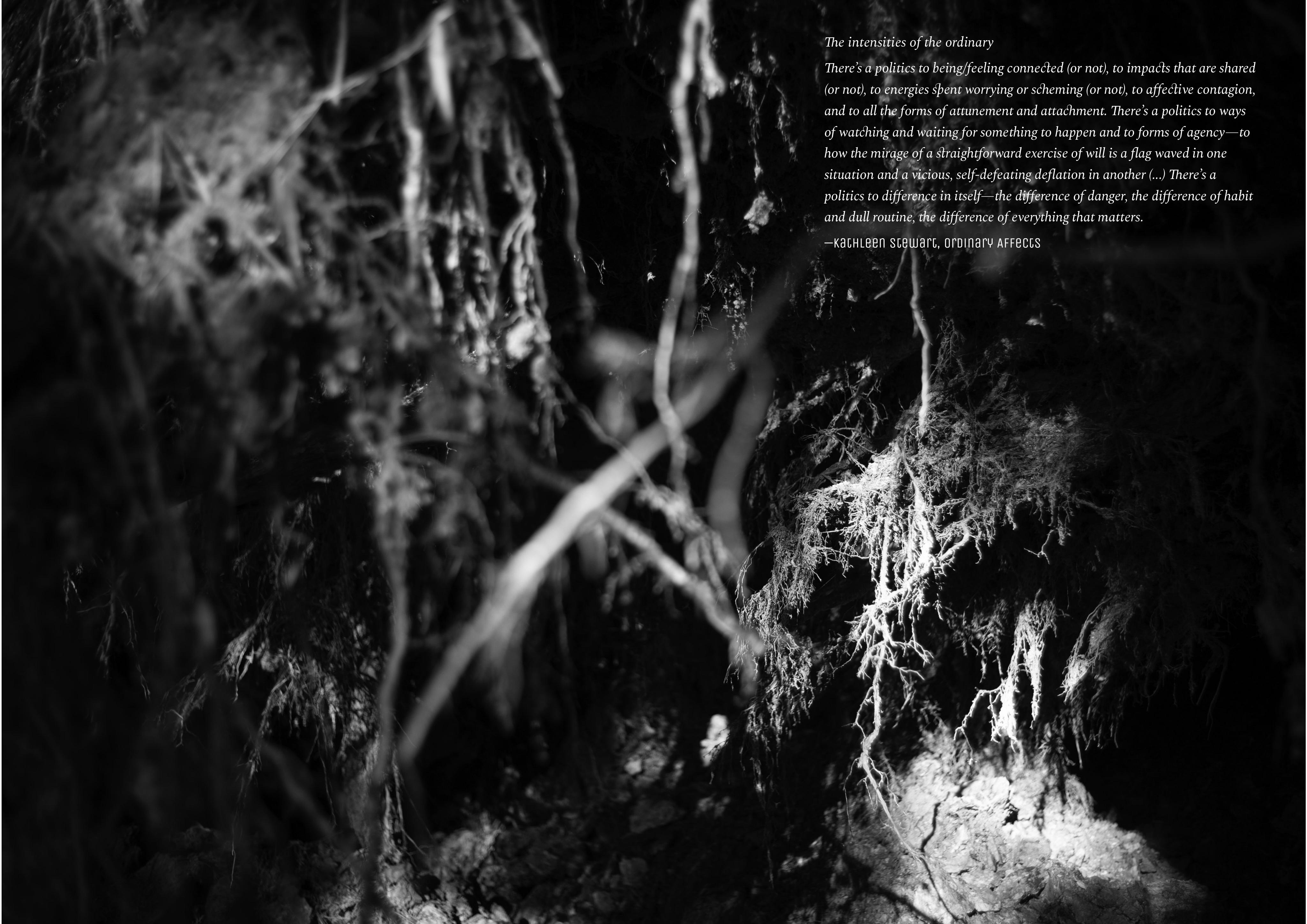Attunement and the inframince
Excerpts from “Attunement and the Inframince” by Edith Doove
Attunement tends to take place at a small scale, usually focusing on subtle differences in intonation. It is only with attention for the smallness in life, the small intertwining movements of the human and non-human, that we are able to properly attune to our surroundings. Basically, attunement comes down to being carefully aware of the ‘process of the world’ as advocated by Whitehead, Deleuze and Cage.
Attuning is sensing possibilities or presences (whether by ear, eye, or the full body) we are usually not aware of. Marcel Duchamp’s concept of the inframince can therefore be turned into the perfect tool to do just that. The inframince is the usually overlooked, the awry. One of Duchamp's 'definitions' of the inframince is that of 'possibility'. He connects the inframince to various everyday observations, the most famous of which is that of the intermingling of smoke and breath in a 'marriage' when smoking. In its attention for the minor it is possible to make a connection to the becoming minor of Deleuze (as an integral part of affective emancipation), to Serres’ observation of the clinamen, and to the parasite as an 'inventor' of cybernetics.
Once being made aware of the minor it cannot be un-thought. It inevitably leads to the state of what Serres calls 'white multiplicity' caused by a minimal differentiation, which the inframince does by calling attention. As in 'white noise', which is of equal intensity, white multiplicity “does not (yet) approach a clearly ordered form. It is a kind of in-between state, neither pure noise nor pure order, a third position ranged between the two” that has “maximum information value” (Brown) as long as one recognizes it. In other words, a pure state of becoming.
Through this operation it is thus possible to connect the inframince to an ecological awareness or attunement. In The Parasite, Serres argues “that by being pests, minor groups can become major players in public dialogue – creating diversity and complexity vital to human life and thought.” In thus equating the minor and the inframince, with 'trouble' we inadvertently end up with Donna Haraway arguing for a practice of sym-poiesis or 'making-with' (reminiscent of Whitehead’s 'togetherness') to combat the negativity that surrounds the Anthropocene.
When explored in relation to our dealings with the nonhuman and our damaged planet, the inframince can potentially play the role of a mischievous jester, pointing to otherwise unnoticed elements that matter and require attention.
Dust and Shadow Reader Vol. 2. Previous: olufsenandi. Next: bee diaspora

